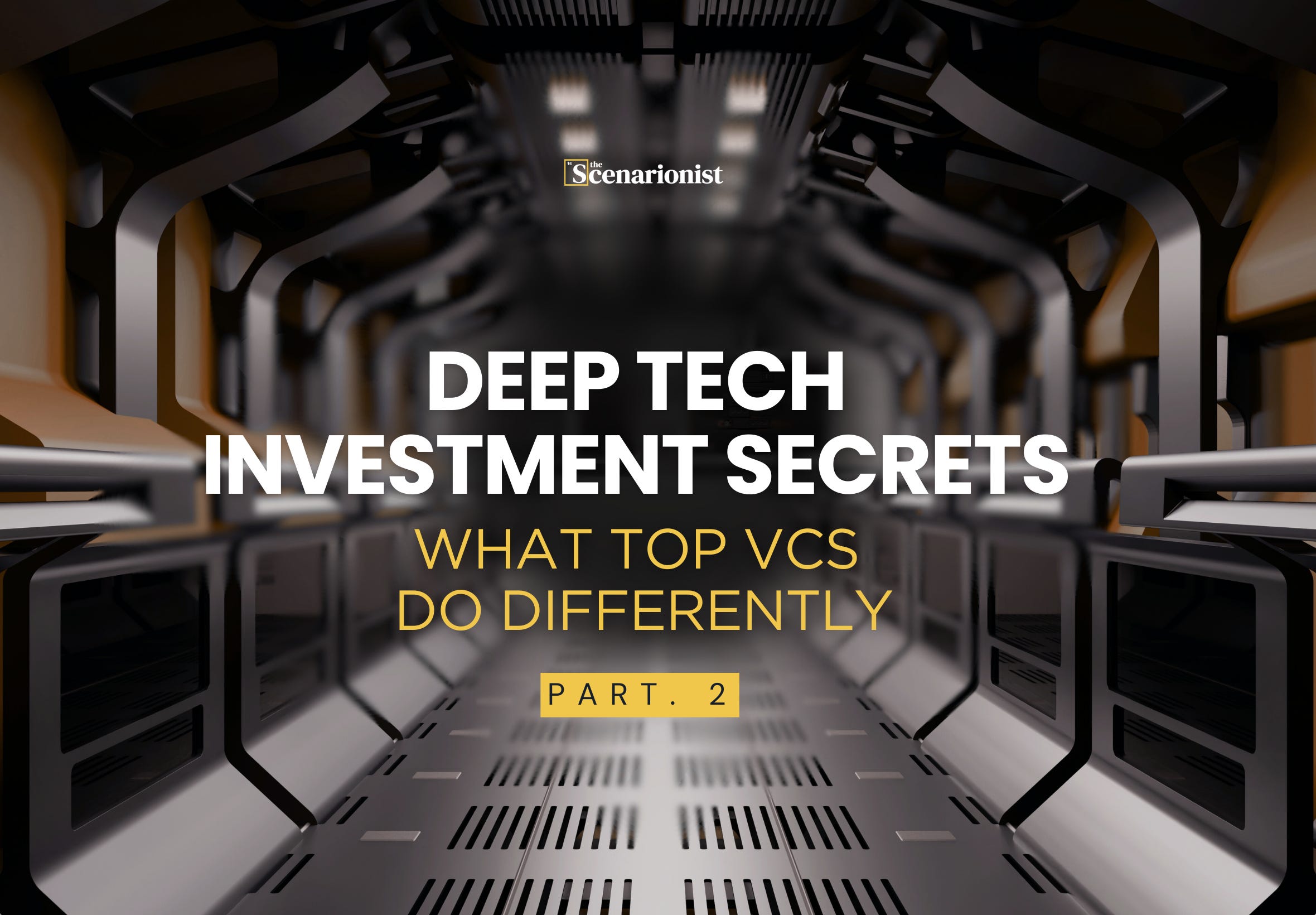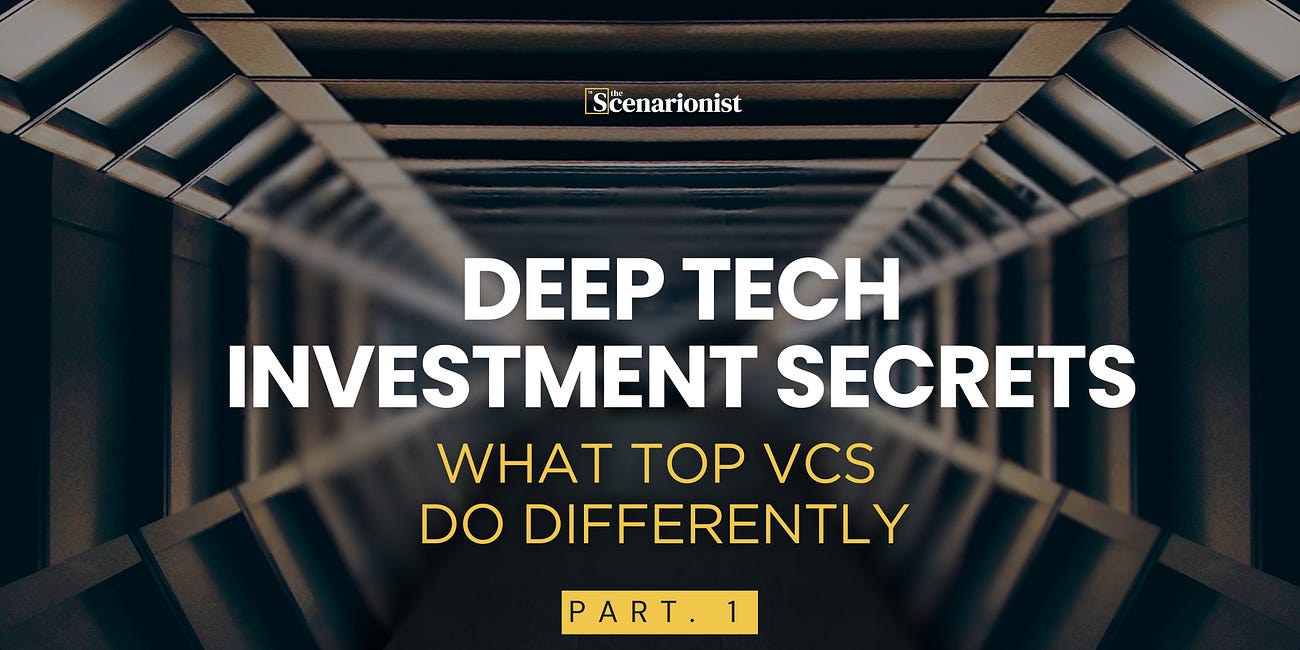Deep Tech Investment Secrets: What Top VCs Do Differently - Part 2
Designing scarcity, mapping risk, and replacing TAM theater with real buyer-backed growth models.
Each market cycle leaves behind its own grammar of credibility. Signals that once persuaded—an eloquent presentation, a promising acronym, the right slide at the right conference—gradually lose their force. New thresholds emerge. What investors once tolerated as ambiguity must now be formalized as proof. The current moment in venture capital marks precisely such a threshold.
Over the last two years, the shift has been unmistakable. Liquidity has not vanished, but its nature has changed.
The tolerance for ambiguity is lower, the patience for unstructured promises shorter. Where capital still moves, it does so in response to signals that can be independently verified: structured contracts, deposit-backed orders, rigorous techno-economic analyses, and adoption curves that reflect actual procurement rhythms rather than imagined diffusion.
In this environment, sophistication is not a matter of jargon but of translation. Translation of complexity into evidence; translation of prototypes into contracts; translation of scientific novelty into reliability that can be insured, financed, and scaled. This is where the separation occurs—between investors who can recognize signals that matter and those who are still hoping that narrative alone will suffice.
This is also why leading investors place weight not on momentum, but on scarcity deliberately designed to endure. Scarcity is rarely an accident; it is the outcome of strategy. Production capacity can be rationed to credible buyers, validators can be cultivated to shorten adoption cycles across adjacent markets, approvals and reimbursement codes can be secured to redefine the boundaries of the sellable market. Such elements create competitive moats far more enduring than narrative enthusiasm.
Deep Tech Investment Secrets: What Top VCs Do Differently is a two-part deep dive distilled from exclusive conversations with top-tier investors, peer-reviewed research, and industry best practices. Its purpose is not to amplify noise, but to refine judgment in 2025: judgment about which signals indicate that a fragile pilot can graduate into a bankable deployment, which commitments count as genuine demand, and which milestones truly unlock new pools of capital.
Part 1 outlined the upstream architecture of advantage—how proprietary deal flow originates in discovery ecosystems, how university equity structures and licensing terms shape downstream viability, why defensibility extends beyond patents, and how exit strategies must be designed rather than deferred.
Deep Tech Investment Secrets: What Top VCs Do Differently - Part 1
Strategic patterns used by leading deep tech investors to get better deals, faster access, and lower downstream risk.
Part 2 carries the discussion forward. The focus shifts to Designing Strategic Scarcity and Beating Risk Aversion with Hard Proof Points, complemented by additional perspectives on how deep tech strategies are evaluated, de-risked, and positioned for scale.
Enjoy the read!
1. Beating Risk Aversion with Hard Proof Points
Transforming Narratives into Investable Evidence
In today’s hard mode markets, belief does not move capital—evidence does. The most experienced investors tend to replace broad promises with tangible proof: evidence that lenders can underwrite, that procurement teams can rely on, and that compresses the path from pilot to purchase orders.
This type of evidence usually rests on three reinforcing pillars:
a living techno-economic analysis (TEA) tied to real unit operations and scale,



